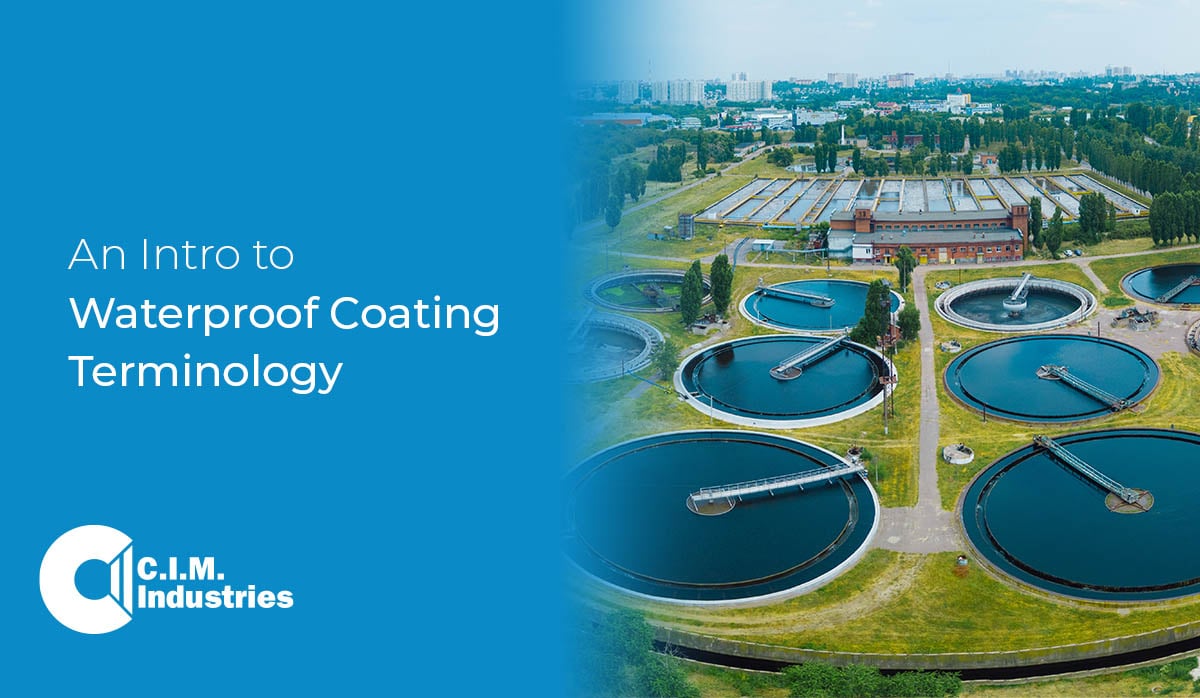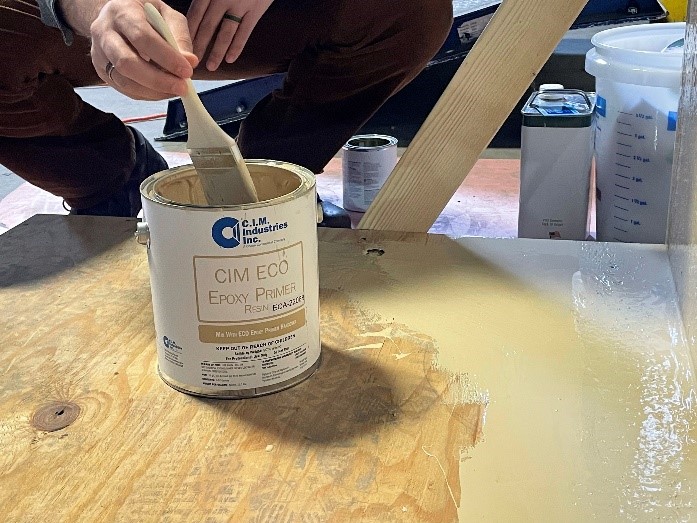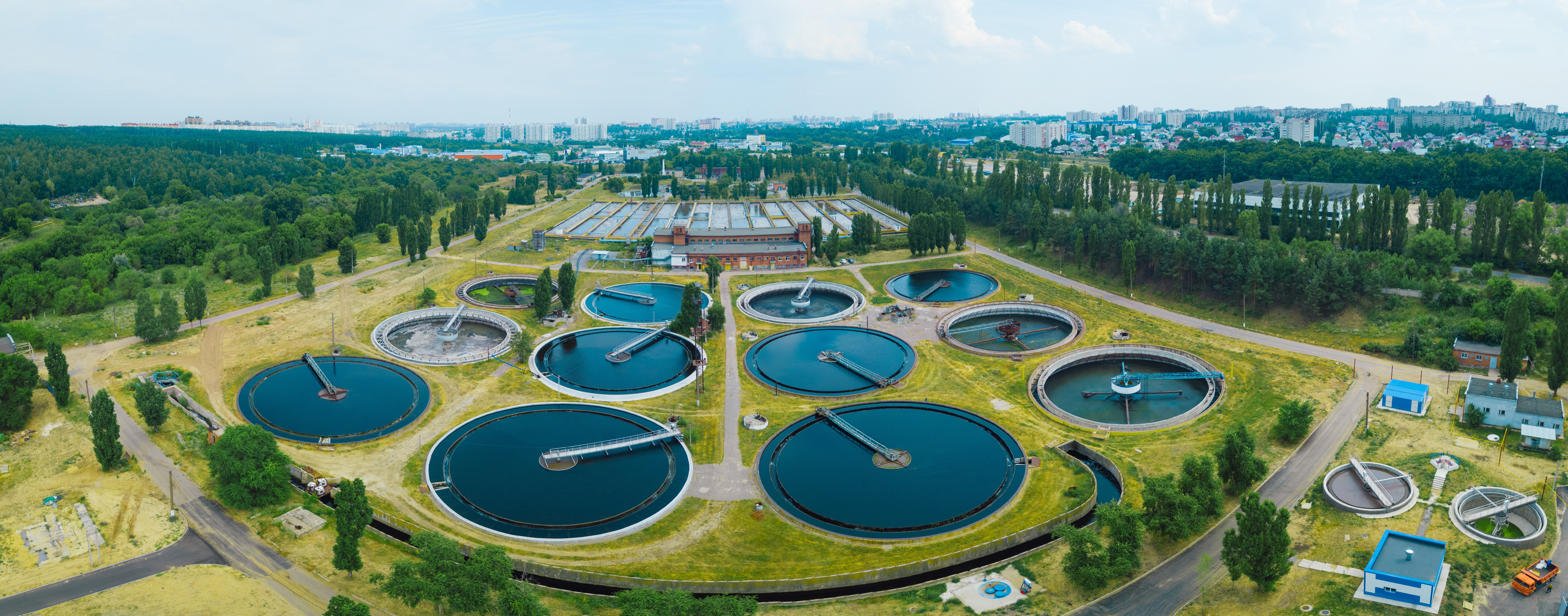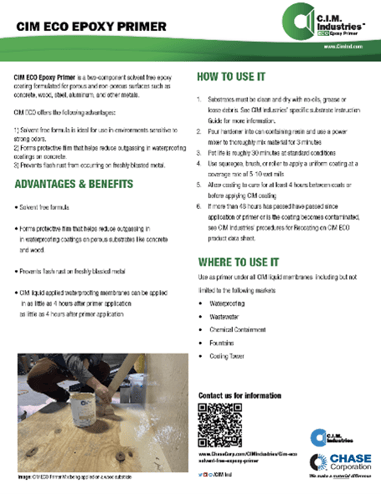
The definition of waterproofing is very straightforward: to protect an object from water-based damage. Often, the main function of waterproofing material is to keep water out from an area or to keep water contained within an area. Regarding the residential, commercial, and industrial construction industries; there are many common terms to define the concepts and materials involved with waterproofing. Words and phrases related to product selection, site preparation, physical specifications, application conditions, installation, and testing, are just a few categories of terms that you may come across.
In this series, we will review the common vocabulary relating to waterproofing materials in construction settings and break down what all this waterproofing talk really means.
Why Waterproofing in Construction
In construction, there are many reasons why a waterproofing material may be necessary in the engineered design of new projects or repairs of an existing structure. Waterproofing materials are typically used to protect overall structures--or specific materials used to build a structure--from deterioration due to the presence of water. Deterioration of a structure often creates a situation where structural integrity is compromised and becomes unsafe, the visual, artistic, or cosmetic features of a structure are destroyed, and/or the main function of the structure is negatively impacted.
Waterproofing in Construction: Terminology
1) Coatings:
A material applied to cover a surface (substrate) or object.
Examples: Paint, Primers, Glue, Sealants, Sealants, Protective, Marine, Liquid, Powder, Solid, Epoxy, Polyurethane etc.
2) Substrate:
The surface, material, or object on which a coating is applied.
Examples: concrete, steel, plywood, plastic, pipe, etc.

A concrete substrate in a water fountain

A plywood substrate on a balcony
3) Protective Coating:
A coating applied to a substrate that provides protection from various elements to prevent corrosion or deterioration of the substrate and supporting structures/materials. Common protection is provided from water, chemicals, ultraviolet rays, weathering, and abrasion.
4) Waterproofing System:
A combination of materials designed to be used in concert that provides protection from water. These systems often include primers, tapes, sealants, and various membranes.
5) Waterproofing Membrane:
A material layered over and/or adhered to a substrate(s) to create a physical, impermeable barrier to water.
6) Liquid-applied or Fluid-applied:
A protective coating applied as a liquid that cures in place to form a seamless physical barrier (membrane) to various elements. These materials are often applied by hand, brush, squeegee, roller, or utilizing specialized spray equipment.
7) Self-Adhered:
A protecting coating supplied as a membrane which has been coated with adhesive and release liner enabling the membrane to be applied in place by hand in a “peel & stick” manner.

Self-adhered membrane
8) Application:
The installation of a coating and details relating to the installation. Application can refer to the in-service coating, the physical act of installing the coating, the environmental conditions the coating is subjected to before, during and after installation, the way the material is installed, and the physical application site.

Application of primer on a wood substrate
9) Lining:
A membrane designed to be applied to the surfaces of a storage vessel. The lining can be applied to protect the vessel from corrosion, contain materials within the vessel, or both. Linings are often referred to when discussing storage tanks, transfer tanks, ponds, fountains, pools, etc.
10) Immersion:
A condition in which an object, material, surface, or structure is continuously surrounded by or submerged in a liquid.
Examples: water storage tanks, wastewater clarifiers, stormwater detention tanks, ponds, fountains, pools, etc.

Concrete Substrate in a Stormwater Tank
11) Technical Data Sheet (TDS) or Product Data Sheet (PDS):
A document provided by the coating manufacturer describing product-specific technical information. These documents often contain laboratory test results, physical & chemical properties, application basics, advantages & limitations, and contact information regarding the coating.

A typical Product Data Sheet
12) Safety Data Sheet (SDS):
A document provided by the coating manufacturer that details product-specific safety information detailing potential physical and health hazards. These documents contain all the appropriate instructions for the safe handling, storage, and transporting of the specific product.
These common terms form the basis for proper product selection, preparation, and application of waterproofing coatings used in the construction industry. Whether you are new to the industry and completely confused or a seasoned professional needing a refresher, bookmark this article for a quick reference when discussing waterproofing and protective coatings. Stay tuned for subsequent blogs focused on materials, substrates and preparation, field applications and more.
Was there a term you were hoping to see but not included in this article? Comment below and we'll be sure to discuss them in future iterations of this series!






